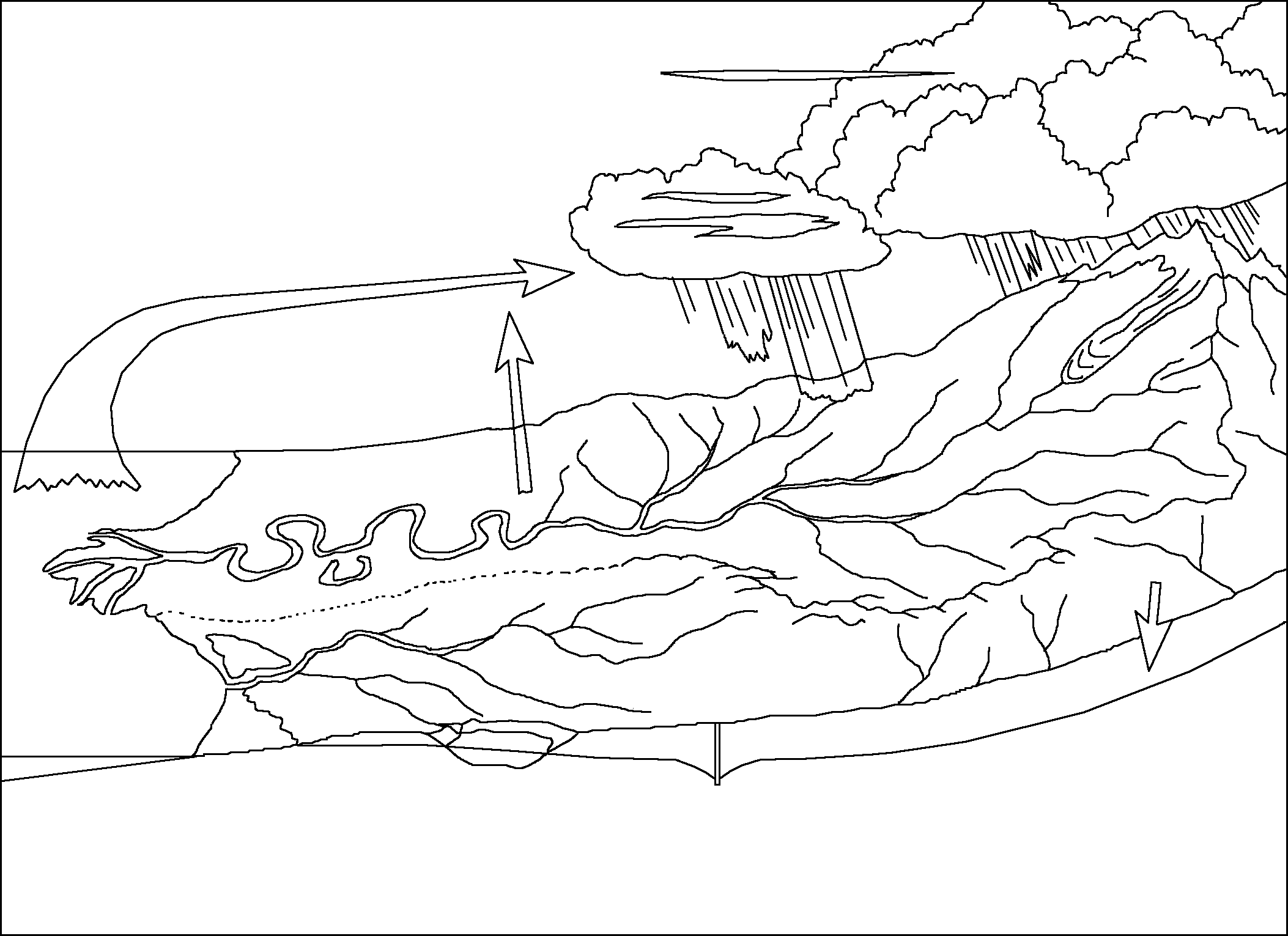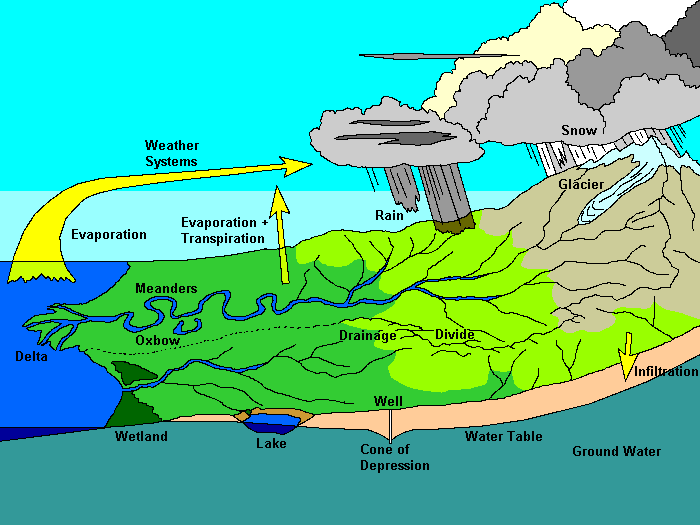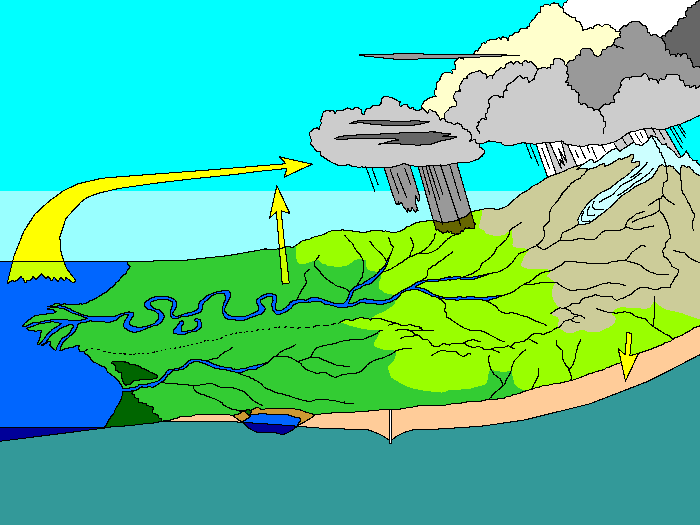Water on the Earth
Steven Dutch, Professor Emeritus, Natural and Applied Sciences, University of Wisconsin - Green Bay
This picture shows how water is drawn from the sea by evaporation, falls on the land as ice and snow, then returns to the sea in rivers, or is stored underground.

Labeled Diagram
Water evaporates from the oceans and is transported by weather systems, to fall thousands of miles away as rain or snow. Much of the water runs off into streams and rivers, but snow that falls at high elevation or in cold regions may accumulate to form glaciers. Much of the water that falls on the land never makes it to the sea, but returns to the atmosphere by evaporation, or is used by plants and then returned to the atmosphere, a process called transpiration.

Small streams join to make larger streams, until eventually they form a single large river that flows to the sea (or sometimes a lake). Along the lower portion of the river, if the land is very flat, the river may wind through bends called meanders. Sometimes the river may break through the narrow neck of a meander and leave the former meander isolated as a C-shaped lake called an oxbow. Between two river systems there is a ridge called a drainage divide. All the water on one side of the drainage divide flows to one river, all the water on the other side flows to the other river. Sometimes the drainage divide is a dramatic mountain crest, but sometimes it can be so low and inconspicuous that it can be very hard to locate without a map.
A great deal of the water that falls on the land sinks into the ground to become ground water. The boundary separating dry rocks from water saturated rocks is called the water table. Although people often speak of "underground rivers," almost all ground water is in tiny cracks and pores in the rock, like water in a sponge. Real underground rivers flow through caves and are rare. If the land surface dips below the water table, a depression may fill to form a lake, or if the water table is just at the surface, wetlands occur. People tap into ground water with wells, and if the water in the well is pumped out faster than ground water can flow in to replace it, the water table around the well drops to form a cone of depression.
Possible Coloring

Return to Geology Coloring Book Index
Return to Professor Dutch's Home Page
Created 03 February 2008, Last Update 15 January 2020